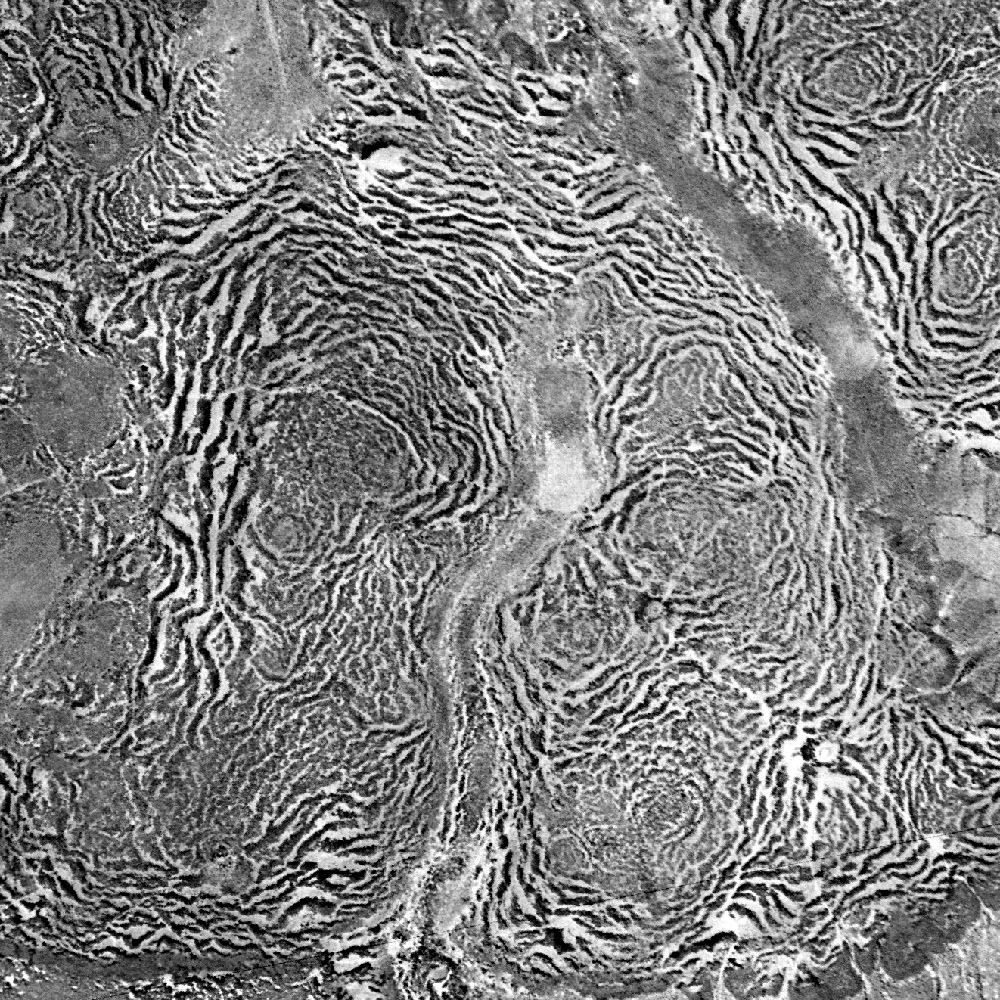|
Somitogenesis
Somitogenesis is the process by which somites form. Somites are bilaterally paired blocks of paraxial mesoderm that form along the anterior-posterior axis of the developing embryo in vertebrates. The somites give rise to skeletal muscle, cartilage, tendons, endothelium, and dermis. Overview During somitogenesis, somites form from the pre-somitic mesoderm, a region of mesoderm at the posterior of the developing embryo. This tissue undergoes convergent extension as the primitive streak regresses, or as the embryo gastrulates. The notochord extends from the base of the head to the tail; with it extend thick bands of paraxial mesoderm. As the primitive streak continues to regress, somites form from the pre-somitic mesoderm by 'budding off' periodically from the anterior end of the pre-somitic mesoderm. The underlying developmental signals controlling this periodic formation are thought to conform to a clock-wavefront model. These immature somites then are compacted into an oute ... [...More Info...] [...Related Items...] OR: [Wikipedia] [Google] [Baidu] |
Clock And Wavefront Model
The clock and wavefront model is a model used to describe the process of somitogenesis in vertebrates. Somitogenesis is the process by which somites, blocks of mesoderm that give rise to a variety of connective tissues, are formed. The model describes the splitting off of somites from the paraxial mesoderm as the result of oscillating expression of particular proteins and their gradients. Overview Once the cells of the pre-somitic mesoderm are in place following by cell migration during gastrulation, oscillatory expression of many genes begins in these cells as if regulated by a developmental "clock". This has led many to conclude that somitogenesis is coordinated by a "clock and wave" mechanism. More technically, this means that somitogenesis occurs due to the largely cell-autonomous oscillations of a network of genes and gene products which causes cells to oscillate between a permissive and a non-permissive state in a consistently timed-fashion, like a clock. These genes include ... [...More Info...] [...Related Items...] OR: [Wikipedia] [Google] [Baidu] |
Notch Signaling Pathway
The Notch signaling pathway is a highly Conserved sequence, conserved cell signaling system present in most animal, animals. Mammals possess four different Notch proteins, notch receptors, referred to as NOTCH1, NOTCH2, Notch 3, NOTCH3, and NOTCH4. The notch receptor is a single-pass Cell surface receptor, transmembrane receptor protein. It is a hetero-oligomer composed of a large extracellular portion, which associates in a calcium-dependent, non-covalent interaction with a smaller piece of the notch protein composed of a short extracellular region, a single transmembrane-pass, and a small intracellular region. Notch signaling promotes proliferative signaling during neurogenesis, and its activity is inhibited by NUMB (gene), Numb to promote neural differentiation. It plays a major role in the regulation of embryonic development. Notch signaling is dysregulated in many cancers, and faulty notch signaling is implicated in many diseases, including T-cell acute lymphoblastic leuke ... [...More Info...] [...Related Items...] OR: [Wikipedia] [Google] [Baidu] |
Cutis Plate
The somites (outdated term: primitive segments) are a set of bilaterally paired blocks of paraxial mesoderm that form in the embryonic stage of somitogenesis, along the head-to-tail axis in segmented animals. In vertebrates, somites subdivide into the dermatomes, myotomes, sclerotomes and syndetomes that give rise to the vertebrae of the vertebral column, rib cage, part of the occipital bone, skeletal muscle, cartilage, tendons, and skin (of the back). The word ''somite'' is sometimes also used in place of the word '' metamere''. In this definition, the somite is a homologously-paired structure in an animal body plan, such as is visible in annelids and arthropods. Development The mesoderm forms at the same time as the other two germ layers, the ectoderm and endoderm. The mesoderm at either side of the neural tube is called paraxial mesoderm. It is distinct from the mesoderm underneath the neural tube, which is called the chordamesoderm that becomes the notochord. The p ... [...More Info...] [...Related Items...] OR: [Wikipedia] [Google] [Baidu] |
Sclerotome
The somites (outdated term: primitive segments) are a set of bilaterally paired blocks of paraxial mesoderm that form in the embryogenesis, embryonic stage of somitogenesis, along the head-to-tail axis in segmentation (biology), segmented animals. In vertebrates, somites subdivide into the #Dermatome, dermatomes, #Myotome, myotomes, #Sclerotome, sclerotomes and #Syndetome, syndetomes that give rise to the vertebrae of the vertebral column, rib cage, part of the occipital bone, skeletal muscle, cartilage, tendons, and dermis, skin (of the back). The word ''somite'' is sometimes also used in place of the word ''Metamerism (biology), metamere''. In this definition, the somite is a Homology (biology), homologously-paired structure in an animal body plan, such as is visible in annelids and arthropods. Development The mesoderm forms at the same time as the other two germ layers, the ectoderm and endoderm. The mesoderm at either side of the neural tube is called paraxial mesoderm. I ... [...More Info...] [...Related Items...] OR: [Wikipedia] [Google] [Baidu] |
Paraxial Mesoderm
Paraxial mesoderm, also known as presomitic or somitic mesoderm, is the area of mesoderm in the neurulating embryo that flanks and forms simultaneously with the neural tube. The cells of this region give rise to somites, blocks of tissue running along both sides of the neural tube, which form muscle and the tissues of the back, including connective tissue and the dermis. Formation and somitogenesis The paraxial and other regions of the mesoderm are thought to be specified by bone morphogenetic proteins (BMPs) along an axis spanning from the center to the sides of the body. Members of the fibroblast growth factor family also play an important role, as does the Wnt pathway. In particular, Noggin, a downstream target of the Wnt pathway, antagonizes BMP signaling, forming boundaries where antagonists meet and limiting this signaling to a particular region of the mesoderm. Together, these pathways provide the initial specification of the paraxial mesoderm and maintain this ident ... [...More Info...] [...Related Items...] OR: [Wikipedia] [Google] [Baidu] |
Skeletal Muscle
Skeletal muscle (commonly referred to as muscle) is one of the three types of vertebrate muscle tissue, the others being cardiac muscle and smooth muscle. They are part of the somatic nervous system, voluntary muscular system and typically are attached by tendons to bones of a skeleton. The skeletal muscle cells are much longer than in the other types of muscle tissue, and are also known as ''muscle fibers''. The tissue of a skeletal muscle is striated muscle tissue, striated – having a striped appearance due to the arrangement of the sarcomeres. A skeletal muscle contains multiple muscle fascicle, fascicles – bundles of muscle fibers. Each individual fiber and each muscle is surrounded by a type of connective tissue layer of fascia. Muscle fibers are formed from the cell fusion, fusion of developmental myoblasts in a process known as myogenesis resulting in long multinucleated cells. In these cells, the cell nucleus, nuclei, termed ''myonuclei'', are located along the inside ... [...More Info...] [...Related Items...] OR: [Wikipedia] [Google] [Baidu] |
Oscillation
Oscillation is the repetitive or periodic variation, typically in time, of some measure about a central value (often a point of equilibrium) or between two or more different states. Familiar examples of oscillation include a swinging pendulum and alternating current. Oscillations can be used in physics to approximate complex interactions, such as those between atoms. Oscillations occur not only in mechanical systems but also in dynamic systems in virtually every area of science: for example the beating of the human heart (for circulation), business cycles in economics, predator–prey population cycles in ecology, geothermal geysers in geology, vibration of strings in guitar and other string instruments, periodic firing of nerve cells in the brain, and the periodic swelling of Cepheid variable stars in astronomy. The term ''vibration'' is precisely used to describe a mechanical oscillation. Oscillation, especially rapid oscillation, may be an undesirable phenomenon in ... [...More Info...] [...Related Items...] OR: [Wikipedia] [Google] [Baidu] |
Travelling Wave
Travel is the movement of people between distant geographical locations. Travel can be done by foot, bicycle, automobile, train, boat, bus, airplane, ship or other means, with or without luggage, and can be one way or round trip. Travel can also include relatively short stays between successive movements, as in the case of tourism. Etymology The origin of the word "travel" is most likely lost to history. The term "travel" may originate from the Old French word ''travail'', which means 'work'. According to the Merriam-Webster dictionary, the first known use of the word ''travel'' was in the 14th century. It also states that the word comes from Middle English , (which means to torment, labor, strive, journey) and earlier from Old French (which means to work strenuously, toil). In English, people still occasionally use the words , which means struggle. According to Simon Winchester in his book ''The Best Travelers' Tales (2004)'', the words ''travel'' and ''travail'' both ... [...More Info...] [...Related Items...] OR: [Wikipedia] [Google] [Baidu] |
Wave (audience)
The wave (also Mexican wave outside North America) is a type of metachronal rhythm achieved in a packed stadium or other large seated venue, when successive groups of spectators briefly stand and raise their arms. Immediately upon stretching to full height, the spectator returns to the usual seated position. The result is a wave of standing spectators that travels through the crowd, even though individual spectators never move away from their seats. In many large arenas the crowd is seated in a contiguous circuit all the way around the sport field, and so the wave is able to travel continuously around the arena; in discontiguous seating arrangements, the wave can instead Reflection (physics), reflect back and forth through the crowd. When the gap in seating is narrow, the wave can sometimes pass through it. Usually only one wave crest will be present at any given time in an arena, although simultaneous, counter-rotating waves have been produced. The wave first appeared in U.S. s ... [...More Info...] [...Related Items...] OR: [Wikipedia] [Google] [Baidu] |
Pattern Formation
The science of pattern formation deals with the visible, (statistically) orderly outcomes of self-organization and the common principles behind similar patterns in nature. In developmental biology, pattern formation refers to the generation of complex organizations of cell fate determination, cell fates in space and time. The role of genes in pattern formation is an aspect of morphogenesis, the creation of diverse anatomy, anatomies from similar genes, now being explored in the science of evolutionary developmental biology or evo-devo. The mechanisms involved are well seen in the anterior-posterior patterning of embryos from the model organism ''Drosophila melanogaster'' (a fruit fly), one of the first organisms to have its morphogenesis studied, and in the eyespot (mimicry), eyespots of butterflies, whose development is a variant of the standard (fruit fly) mechanism. Patterns in nature Examples of pattern formation can be found in biology, physics, and science, and can readily ... [...More Info...] [...Related Items...] OR: [Wikipedia] [Google] [Baidu] |






